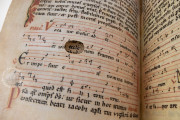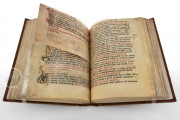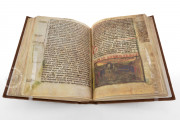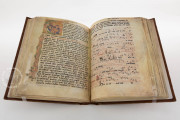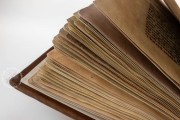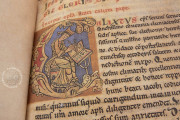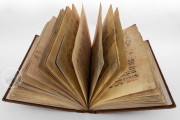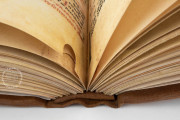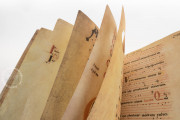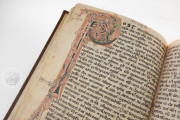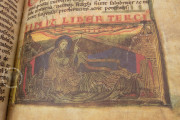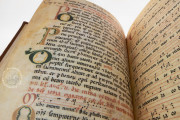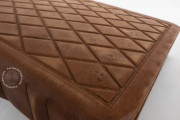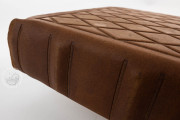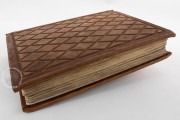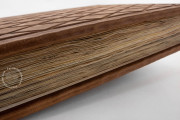Produced in the twelfth century at the cathedral of Santiago de Compostela, the Codex Calixtinus is a book devoted to the Christian apostle Saint James the Greater and his veneration. It is an important early witness to songs composed for more than one voice (polyphony). As the earliest and most complete copy of the Liber sancti Jacobi, it is a key witness to the medieval pilgrimage routes that connected France to the shrine of Saint James in northwestern Spain. Its illumination includes three narrative scenes divided between two miniatures and three historiated and eighteen decorated initials.
The Liber itself comprises five "books": a compendium of liturgical material, a collection of miracle stories, an account of the journey of the body to Santiago, legends about Charlemagne's army in Iberia, and a guide to the places along the pilgrimage routes through France to the tomb. These texts were compiled and copied into the codex between 1138 and 1173.
Polyphonic Songs for Saint James
The two-voice songs in honor of Saint James form an appendix to the main text, copied in the last quarter of the century. They reflect a range of musical styles (even within a single piece) from note-against-note singing to long notes held while the other voice sings a florid melody. Many of the pieces include attributions. Among the composers are Saint Fulbert (d. 1028), Bishop of Chartres, and Hatto, Bishop of Troyes (d. 1143).
Painting along the Pilgrimage Routes
The decorative program of the Codex Calixtinus consists of three narrative scenes depicting key moments from the history of Charlemagne (742-814), the Emperor, and his military leader Roland, as well as three historiated initials depicting Saint James, Pope Calixtus II (d. 1124), and the eighth-century Turpin, Archbishop of Reims.
The paintings are line drawings with washes of color in a restrained palette that substitutes yellow for gold. Most of the painting dates to the early phase of the manuscript's production. The decorated initials are of interlace designs of fleshy vines and dragon forms set against solid-colored backgrounds.
A Guide for Travelers
Book 5, the pilgrims' guide, has justifiably received as much attention as the early polyphonic music. It provides a vivid picture of everyday life in twelfth-century Europe, detailing places to visit, things to see, and what to eat on the pilgrimage to Santiago. It includes a detailed description of twelfth-century Compostela. It offers some of our first evidence for the local vernacular of Compostela.
Named for a Pope
The manuscript owes its nickname to Pope Calixtus II. Each book is prefaced by a letter attributed to him, although he is unlikely to have played any part in assembling the texts. More likely is that the French scholar Aimery Picaud, who made the pilgrimage in 1140, was instrumental in assembling the materials of the Liber sancti Jacobi.
Dismembered, Reassembled, Stolen, and Recovered
The manuscript's history is complicated, even though it now rests at the cathedral where it was made. In 1619, the leaves comprising Book 4 of the Liber (the Charlemagne text), deemed embarrassing for its legendary nature, were removed from the rest of the book. Only in 1964 were the two portions of the manuscript reunited. In 2011, a cathedral employee, José Manuel Fernández Castiñeiras, stole the manuscript, and it was recovered a year later. UNESCO added the manuscript to the Memory of the World Register in 2017.
We have 1 facsimile edition of the manuscript "Codex Calixtinus of Santiago de Compostela": Codex Calixtinus de la Catedral de Santiago de Compostela facsimile edition, published by Kaydeda Ediciones, 1993
Request Info / Price


